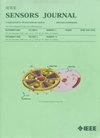FTN-Assisted SWIPT-NOMA Design for IoT Wireless Networks: A Paradigm in Wireless Efficiency and Energy Utilization
IF 4.3
2区 综合性期刊
Q1 ENGINEERING, ELECTRICAL & ELECTRONIC
引用次数: 0
Abstract
In the next-generation wireless Internet-of-Things (IoT) networks empowered by modern communication technology, nonorthogonal multiple access (NOMA) and faster-than-Nyquist (FTN) signaling are purportedly two enabling technologies that enhance spectral efficiency (SE) without requiring additional spectrum resources. In addition, simultaneous wireless information and power transfer (SWIPT) technology enables IoT sensors and devices to harvest energy from radio frequency (RF) signals, effectively mitigating power supply limitations. This article proposes and investigates a novel SWIPT-NOMA system based on FTN technology, referred to as FTN-assisted SWIPT-NOMA, for IoT relay networks over Rayleigh fading channels. We provide a comprehensive analysis of the ergodic capacity and achievable rate of the FTN-assisted SWIPT-NOMA system applied in IoT relay networks. Specifically, we explore two distinct relaying architectures geared toward augmenting SE and energy utilization, i.e., power-splitting (PS) and time-switching (TS). We derive approximated expressions for the ergodic capacity and analyze high- signal-to-noise radio (SNR) slopes for sensor users in both architectures. Simulation results show that the ergodic capacity of the proposed system surpasses that of the conventional Nyquist SWIPT-NOMA system, with greater capacity improvements as the FTN acceleration factor求助全文
约1分钟内获得全文
求助全文
来源期刊

IEEE Sensors Journal
工程技术-工程:电子与电气
CiteScore
7.70
自引率
14.00%
发文量
2058
审稿时长
5.2 months
期刊介绍:
The fields of interest of the IEEE Sensors Journal are the theory, design , fabrication, manufacturing and applications of devices for sensing and transducing physical, chemical and biological phenomena, with emphasis on the electronics and physics aspect of sensors and integrated sensors-actuators. IEEE Sensors Journal deals with the following:
-Sensor Phenomenology, Modelling, and Evaluation
-Sensor Materials, Processing, and Fabrication
-Chemical and Gas Sensors
-Microfluidics and Biosensors
-Optical Sensors
-Physical Sensors: Temperature, Mechanical, Magnetic, and others
-Acoustic and Ultrasonic Sensors
-Sensor Packaging
-Sensor Networks
-Sensor Applications
-Sensor Systems: Signals, Processing, and Interfaces
-Actuators and Sensor Power Systems
-Sensor Signal Processing for high precision and stability (amplification, filtering, linearization, modulation/demodulation) and under harsh conditions (EMC, radiation, humidity, temperature); energy consumption/harvesting
-Sensor Data Processing (soft computing with sensor data, e.g., pattern recognition, machine learning, evolutionary computation; sensor data fusion, processing of wave e.g., electromagnetic and acoustic; and non-wave, e.g., chemical, gravity, particle, thermal, radiative and non-radiative sensor data, detection, estimation and classification based on sensor data)
-Sensors in Industrial Practice
 求助内容:
求助内容: 应助结果提醒方式:
应助结果提醒方式:


